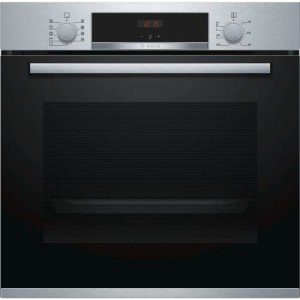The Rise of Built-In Ovens: A Seamless Approach to Modern Cooking
In modern kitchens, where style looks blend seamlessly with performance, one device stands out as a real game changer: the built-in oven. As house owners and chefs alike continue to look for ingenious solutions that enhance their cooking experience, built-in ovens have actually become significantly popular. This article checks out the benefits, considerations, and trends surrounding built-in ovens, highlighting why they are a vital function in contemporary cooking spaces.
What is a Built-In Oven?
A built-in oven is a kitchen home appliance created to be integrated into the cabinetry of a cooking area rather than standing alone. Unlike traditional freestanding ovens, which can be moved and positioned anywhere, built-in ovens been available in various designs and sizes to fit particularly within designated spaces. intergrated oven in single or double configurations, these ovens provide a streamlined look that matches modern-day cooking area designs.
Benefits of Built-In Ovens
1. Space-Saving Design
Among the most attractive advantages of built-in ovens is their space-saving style. By incorporating the oven into kitchen cabinetry, you can maximize valuable counter and floor area. This is particularly helpful in smaller kitchens, where optimizing room is necessary. integrated fan oven -in ovens can be installed at eye level, making them more accessible and lowering the requirement to bend down.
2. Visual Appeal
Built-in ovens add to a sleek and cohesive kitchen area style. Readily available in various surfaces-- such as stainless-steel, black, white, and custom kitchen cabinetry-- they can blend perfectly into the general design. This visual appeal improves the kitchen's visual harmony and elevates the area, producing a modern-day and advanced atmosphere.
3. Enhanced Functionality
Lots of built-in ovens come geared up with sophisticated cooking technologies, such as convection cooking, steam ovens, and wise functions. These improvements permit for versatile cooking choices, making it simpler to achieve professional-level outcomes in the house. Smart built-in ovens can even link to Wi-Fi, allowing users to control the oven from another location, get notices, and gain access to a variety of cooking programs and dishes.
4. Improved Ventilation
Due to the fact that built-in ovens can be integrated with cooking area hoods and ventilation systems, they can help keep much better air quality and reduce cooking odors. This is specifically significant for those who enjoy to prepare with aromatic spices and components, as a reliable ventilation system can keep the cooking area comfortable and welcoming.
5. Customization Options
Built-in ovens use a large range of personalization choices to suit individual cooking designs and needs. From professional-grade appliances with several cooking modes to compact styles for smaller sized kitchens, house owners can pick the oven that fits their particular requirements. Numerous makers also use personalized front panels, allowing you to match the oven's appearance to your cabinetry for a really unified appearance.
Factors to consider When Choosing a Built-In Oven
While built-in ovens have numerous advantages, there are essential factors to consider to keep in mind before making a purchase:
1. Cost
Built-in ovens generally include a greater cost than their freestanding counterparts due to their design and installation requirements. It's crucial to factor in both the cost of the oven and any additional costs connected to cabinets modifications or setup.
2. Setup Requirements
Setting up a built-in oven frequently needs professional help, particularly if you need to modify existing kitchen cabinetry. Ensure that you think about any costs associated with setup, including labor and prospective cabinetry changes.
3. Size and Dimensions

Before purchasing a built-in oven, measure the designated space accurately to ensure a proper fit. Built-in ovens can be found in various sizes and setups, so choosing one that aligns with your requirements and kitchen area style is crucial.
4. Way of life and Usage
Consider your cooking routines and requires when choosing a built-in oven. If you often host large events, a double oven may be more helpful. On the other hand, if you have a compact kitchen, a single-wall oven might be adequate.
Patterns in Built-In Ovens
The kitchen area device market is constantly evolving, and built-in ovens are not exempt from emerging trends. Some existing patterns include:
Smart Technology Integration: With the rise of clever home technology, built-in ovens now often feature connectivity alternatives. This allows users to keep track of cooking development and adjust settings via mobile apps.
Energy Efficiency: As sustainability ends up being a top priority, lots of manufacturers are purchasing energy-efficient built-in ovens that reduce energy intake while preserving efficiency.
Multi-functional Designs: Built-in ovens now provide functions such as air frying, slow cooking, and steaming, supplying versatility that satisfies a broad range of cooking methods.
Conclusion
Built-in ovens certainly represent an ideal mix of style, function, and convenience in today's cooking areas. As more house owners go with this modern option, the focus shifts to creating a cooking area that is as aesthetically pleasing as it is practical. Whether you are building a brand-new home or remodeling your kitchen, thinking about a built-in oven could elevate your culinary experience and change your kitchen into a stylish and practical sanctuary. With a variety of alternatives available and ongoing innovations in technology, built-in ovens stay a standout option for both newbie cooks and culinary lovers alike.
